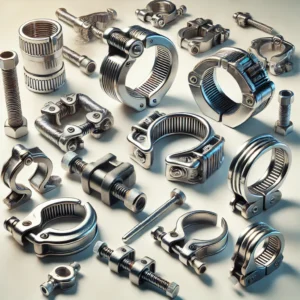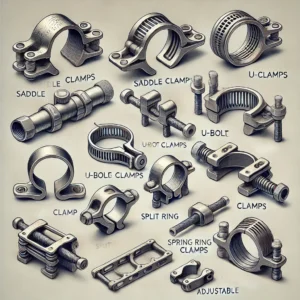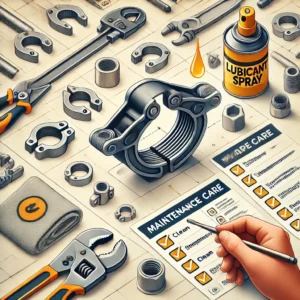Understanding Pipe Clamps: A Comprehensive Overview for Industrial and DIY Applications
Introduction to pipe clamps:
When it comes to protecting pipes, hose pipes, and tubing in different industries, pipe clamps are the unhonored heroes. From plumbing systems in homes to sturdy commercial applications, pipe clamps provide important assistance and security. Without these simple yet functional devices, lots of systems would be prone to failure, leakages, or damages. This guide dives deep into the world of pipe clamps, resolving all possible concerns viewers might have concerning their use, option, and maintenance. Whether you’re a DIY lover or an experienced professional, you’ll find practical remedies and actionable advice below.
What Are Pipe Clamps?

Pipe clamps are mechanical devices made to hold pipes, hose pipes, or tubes securely in position. They supply crucial assistance, alleviate resonance, and avoid variation, guaranteeing the security and integrity of systems. Their applications extend from residential pipes to industrial production, HVAC systems, and also vehicle arrangements. Comprehending their feature and energy can make a significant difference in the performance and toughness of your projects.
Trick Features of Pipe Clamps:
- Adjustability: Many pipe clamps are created to fit pipes of various diameters, making them versatile for various applications.
- Longevity: Constructed from durable materials like stainless steel, galvanized steel, or high-strength plastic, they are constructed to withstand rough environments and stress.
- Reduce of Installation :Most clamps have uncomplicated devices that make them easy to mount or get rid of, even for non-professionals.
Types of Pipe Clamps:

Selecting the ideal kind of pipe clamp is essential for making certain appropriate capability. Each type serves a particular objective and is optimized for certain applications.
1.U-Bolt Clamps
- Summary: U-shaped bolts with threaded ends that fit over a pipe and protect it with nuts.
- Applications: Heavy-duty tasks such as sustaining pipes in industrial facilities, vehicle exhaust systems, or high-pressure pipelines.
- Advantages: High toughness, dependable for hefty lots.
2.Saddle Clamps
- Description : Feature a bent surface area that nestles the pipe, secured with screws on either side.
- Applications: Commonly utilized in plumbing systems and water pipes.
- Advantages: Excellent for preventing lateral motion.
3.Split Clamps
- Summary: Two separate halves that encase the pipe and are bolted with each other.
- Applications: Suitable for high-pressure pipes and situations needing quick setting up or disassembly.
- Advantages: Secure grasp, simple setup around existing pipelines.
4.Tube Clamps
- Description: Specifically designed for smaller-diameter tubing.
- Applications: Used in research laboratory arrangements, chemical plants, and precision instruments.
- Benefits: Precision fit and compact design.
5.Pipe Clamps
- Description: Adjustable bands that tighten up around pipes to prevent leaks.
- Applications: Found in automotive systems, garden hoses, and low-pressure liquid transportation.
- Advantages: Easy to readjust, functional.
6.Pipe Hangers and Straps
- Description: Devices made use of to put on hold pipes from ceilings or walls, giving vertical and straight stability.
- Applications: HVAC systems, constructing infrastructure, and drain systems.
- Advantages: Space-saving and robust support for suspended piping.
Exactly how to Choose the Right Pipe Clamps:
Picking the right pipe clamp can avoid future troubles and enhance system performance. Here’s a detailed overview to help you determine:
Material Selection
- Corrosion Resistance: For destructive environments or outside applications, use stainless steel or plastic clamps.
- Load Capacity: Heavy-duty applications gain from galvanized or alloy steel clamps.
- Temperature Tolerance: High-temperature systems need clamps made from heat-resistant materials.
- Dimension and Fit Measure Accurately: Use calipers or a measuring tape to locate the external diameter of your pipe.
- Adjustable Clamps: Opt for adjustable clamps if flexibility is needed.
- Environmental Conditions Wet or Humid Areas: Select materials with rust-resistant coverings or polymers.
- Vibration-Prone Settings: Use vibration-dampening clamps to decrease damage.
Application-Specific Needs:
- Plumbing Systems: Saddle or split clamps function best.
- Dynamic Systems: For relocating or vibrating pipes, consider clamps with rubber inserts to take in shock.
Common Problems and Solutions:
Even well-selected pipe clamps can deal with challenges over time. Below are common problems and experienced remedies:
Problem 1:
- Corrosion Cause: Exposure to dampness, chemicals, or salt.
- Solution: Use stainless-steel clamps or those with anti-corrosive coverings. Normal cleaning and evaluations also assist.
Problem 2:
- Slippage Cause: Incorrect sizing or not enough tightening up.
- Solution: Choose clamps that fit comfortably and make sure correct tightening up throughout installment.
Problem 3:
- Wear and Tear Cause: Constant resonance or heavy lots.
- Solution: Use vibration-dampening clamps and change worn components without delay.
Problem 4:
- Misalignment Create: Improper installment or structural shifts.
- Solution: Reinstall the clamp, making certain precise placement with the pipe and system design.
Read About : Tubing Clamps
Maintenance And Best Practices:

Upkeep and Best Practices Preserving pipe clamps is important for lasting efficiency.
Regular treatment can prevent expensive repair work and system failings.
- Regular Inspections:
Inspect clamps for rust, cracks, or contortion. Tighten loosened clamps to avoid slippage. - Cleaning up:
Use light detergents or specialized cleansers to eliminate dirt and debris.
For metal clamps, apply anti-corrosion sprays as needed. - Replacement:
Replace harmed or damaged clamps immediately to maintain system stability. Maintain extra clamps available for emergency situations. - Correct Installation:
Always follow the maker’s standards. Avoid overtightening, which can harm both the clamp and the pipe.
Advancements in Pipe Clamps:
The market remains to evolve with new innovations and materials:
- Smart Clamps
Geared up with sensors to keep track of pressure, temperature, and vibration.
Offer real-time data for anticipating maintenance. - Eco-Friendly Materials
Eco-friendly or recyclable clamps lower environmental influence. - Advanced Coatings
Enhanced layers improve resistance to heat, chemicals, and UV exposure.
Some coverings likewise lower rubbing and wear.
Conclusion:
Pipe clamps are important devices in both industrial and DIY settings. By comprehending their types, applications, and best methods, you can ensure trustworthy and reliable systems that last for many years. Whether addressing issues like deterioration or selecting the ideal clamp for a particular need, this guide gives the expertise you need to resolve problems with confidence and properly. Prepared to upgrade your systems? Check out high-quality pipe clamps from trusted distributors and implement these ideal methods to attain optimal results!
One Response